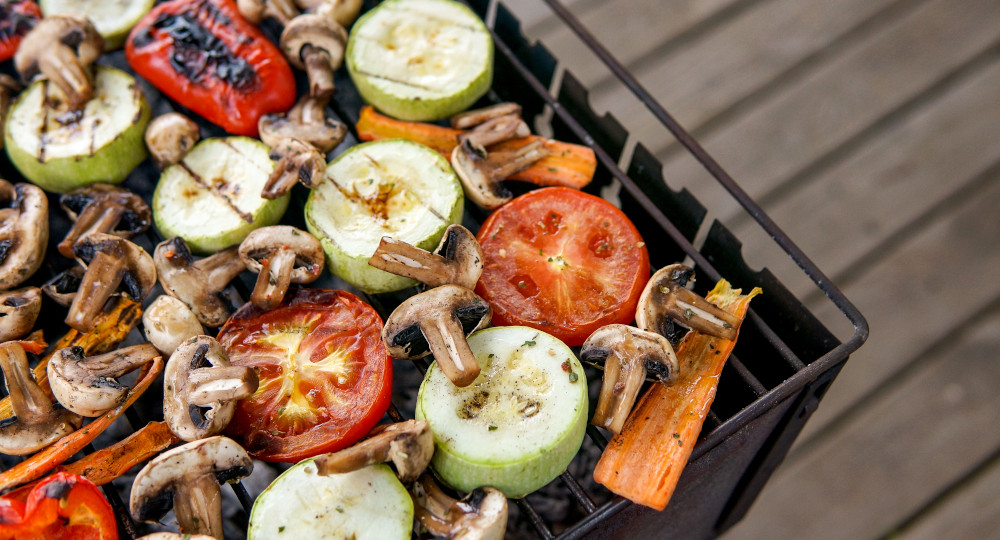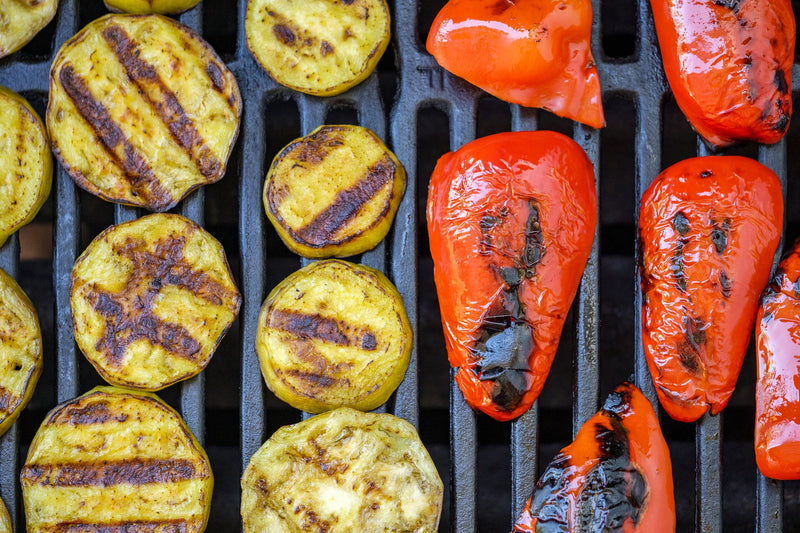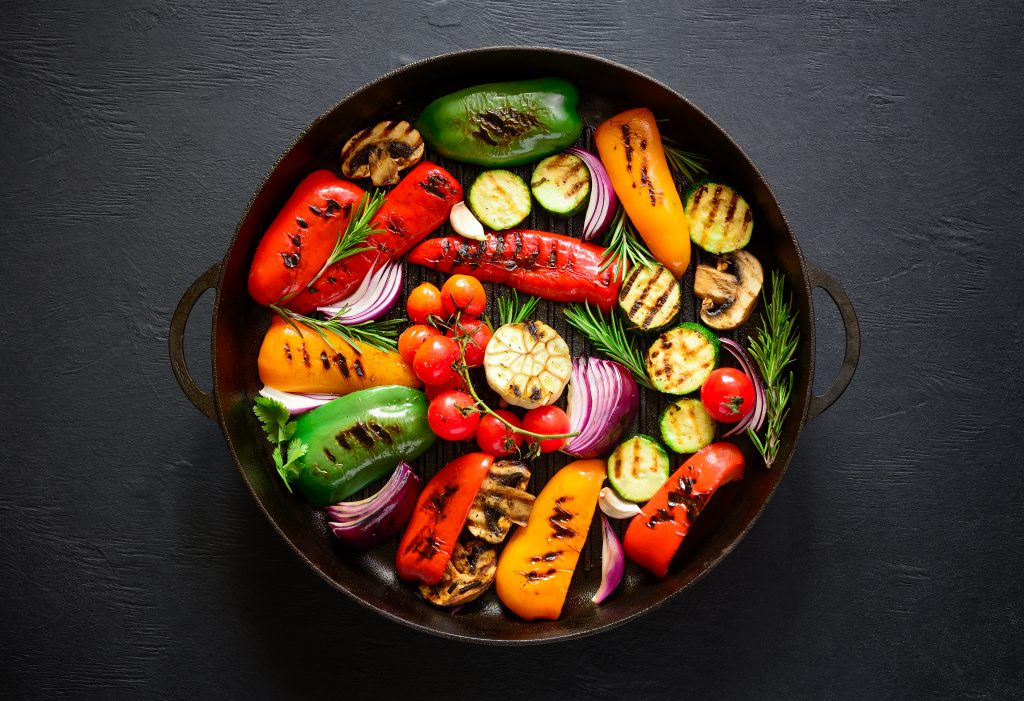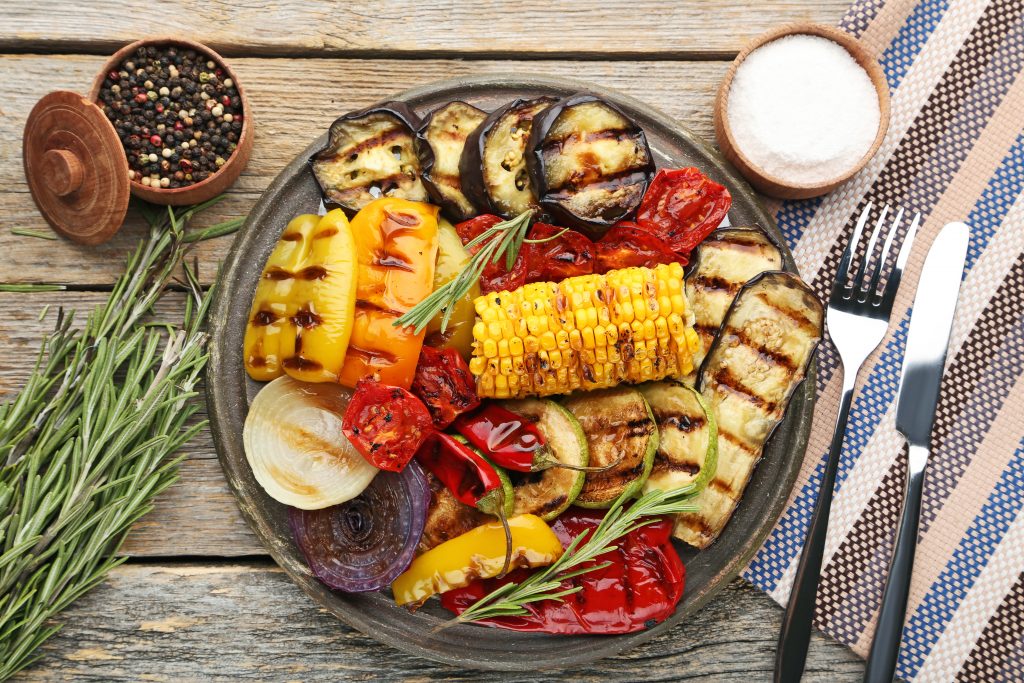Grilovaná zelenina je nejen chutnou, ale i zdravou alternativou k tradičním grilovaným pokrmům. Je lehká, osvěžující a plná vitamínů. Ať už plánujete rodinnou oslavu, přátelské posezení nebo jen hledáte inspiraci pro letní večeři, grilovaná zelenina nikdy nezklame. V tomto obsáhlém průvodci se s Vámi podělíme o tajemství dokonalé grilované zeleniny, od výběru té nejlepší zeleniny, přes přípravu lahodných marinád, až po samotné grilování a servírování.
Proč si zamilovat grilovanou zeleninu?
Grilovaná zelenina nabízí nespočet výhod. Je nízkokalorická, bohatá na vlákninu a obsahuje množství antioxidantů. Grilováním zelenina získá jedinečnou kouřovou chuť a karamelizaci, která zvýrazní její přirozenou sladkost. Navíc je její příprava rychlá a jednoduchá, což ocení každý, kdo nechce trávit u plotny dlouhé hodiny.
Výběr té nejlepší zeleniny na gril
Pro grilování se hodí široká škála zeleniny. Mezi nejoblíbenější patří:
- Paprika: Červená, žlutá, zelená – každá dodá jinou sladkost a barvu.
- Cuketa a lilek: Mají pevnou strukturu a na grilu krásně změknou.
- Kukuřice: Grilovaná kukuřice je letní klasikou s nezaměnitelnou chutí.
- Rajčata: Cherry rajčátka nebo plátky větších rajčat se na grilu rozvinou do sladké šťavnatosti.
- Cibule: Plátky cibule získají grilováním jemnou sladkost.
- Žampiony a další houby: Jejich masitá textura je pro grilování ideální.
- Chřest: Tenké stonky chřestu se na grilu připraví během několika minut a zachovají si svou křehkost.

Při výběru zeleniny dbejte na to, aby byla čerstvá a pevná. Vyhněte se zelenině s otlaky nebo známkami vadnutí.
Marinády: Klíč k dokonalé chuti grilované zeleniny
Marinování je důležitým krokem, který dodá grilované zelenině hloubku chuti a zároveň ji pomůže udržet šťavnatou. Možností je nespočet, zde je několik inspirací:

Jednoduchá bylinková marináda

- Olivový olej
- Česnek (prolisovaný)
- Čerstvé bylinky (rozmarýn, tymián, oregano)
- Sůl a čerstvě mletý pepř
Citronová marináda
- Olivový olej
- Citronová šťáva a kůra
- Med nebo javorový sirup (volitelné)
- Česnek (prolisovaný)
- Špetka chilli vloček (volitelné)
Balsamiková marináda
- Balsamikový ocet
- Olivový olej
- Dijonská hořčice
- Prolisovaný česnek
- Sušené oregano

Zeleninu marinujte alespoň 30 minut, ideálně však 1-2 hodiny v chladničce. Větší a tvrdší kusy zeleniny snesou i delší marinování.
Jak správně grilovat zeleninu: Tipy a triky
Samotné grilování vyžaduje trochu cviku, ale s našimi tipy dosáhnete perfektních výsledků:
Příprava grilu
Gril by měl být čistý a dobře rozpálený. Můžete použít gril na dřevěné uhlí, plynový nebo elektrický gril. Mřížku grilu lehce potřete olejem, aby se zelenina nepřichytávala.
Správná teplota
Pro grilování zeleniny je ideální střední až vysoká teplota. Příliš vysoká teplota by mohla zeleninu spálit zvenku, zatímco uvnitř by zůstala syrová.
Velikost a tvar kusů
Zeleninu nakrájejte na podobně velké kusy, aby se grilovala rovnoměrně. Tenčí plátky se ugrilují rychleji, zatímco větší kusy budou potřebovat více času.
Postup grilování
Zeleninu pokládejte na rozpálený gril v jedné vrstvě. Během grilování ji pravidelně otáčejte, aby se propekla ze všech stran a získala krásné grilovací proužky. Doba grilování se liší v závislosti na druhu a velikosti zeleniny. Měkká zelenina jako rajčata a cuketa bude hotová za pár minut, zatímco tvrdší zelenina jako paprika a cibule bude potřebovat více času.
Pozor na propečení
Zelenina by měla být měkká, ale stále mírně křupavá. Vyhněte se přegrilování, které by ji vysušilo a zbavilo chuti.
Servírování grilované zeleniny: Kreativitě se meze nekladou
Grilovaná zelenina je vynikající sama o sobě, ale můžete ji také využít v mnoha dalších pokrmech:
- Jako příloha k masu, rybám nebo sýrům.
- Do salátů pro extra chuť a barvu.
- Jako součást wrapsů a sendvičů.
- V těstovinových salátech.
- Jako základ pro zeleninové špízy.
- Rozmixovaná na lahodné zeleninové pyré nebo dip.

Grilovanou zeleninu můžete podávat teplou, vlažnou i studenou. Skvěle se k ní hodí čerstvé bylinky, sýry (například feta nebo mozzarella), ořechy a různé dresinky.
Inspirace pro dokonalé servírování
- Grilovaná zelenina s balkánským sýrem a olivami: Jednoduchá a osvěžující kombinace.
- Grilovaná zelenina s pestem a piniovými oříšky: Italská elegance na Vašem talíři.
- Grilovaná zelenina s jogurtovým dipem s mátou a česnekem: Lehká a aromatická omáčka.
Závěr: Grilovaná zelenina – radost pro tělo i duši

Grilovaná zelenina je všestranný, chutný a zdravý pokrm, který by neměl chybět na žádném letním grilování. S našimi tipy a triky se i z Vás stane mistr grilované zeleniny a Vaši hosté budou nadšeni. Tak neváhejte, rozpalte gril a pusťte se do kulinářského dobrodružství plného barev a chutí!